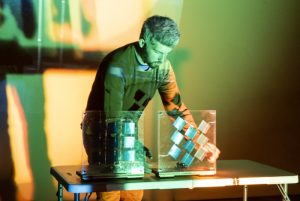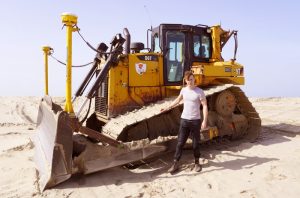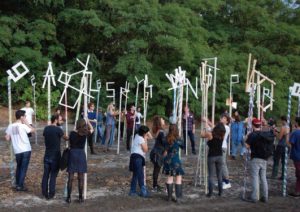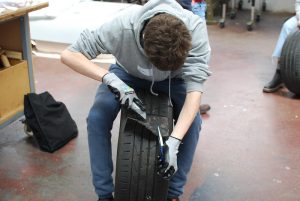“Halletmek” is a popular Turkish catchphrase that refers to the art of solving, adjusting, fixing a problem. Designer Nur Horsanali noticed that the practice of halletmek is everywhere in the streets of Istanbul. People improvise repairs, upgrades and improvements with craft, any cheap material available and a lot of ingenuity. It might not looks very sophisticated but it’s fast, smart and efficient.
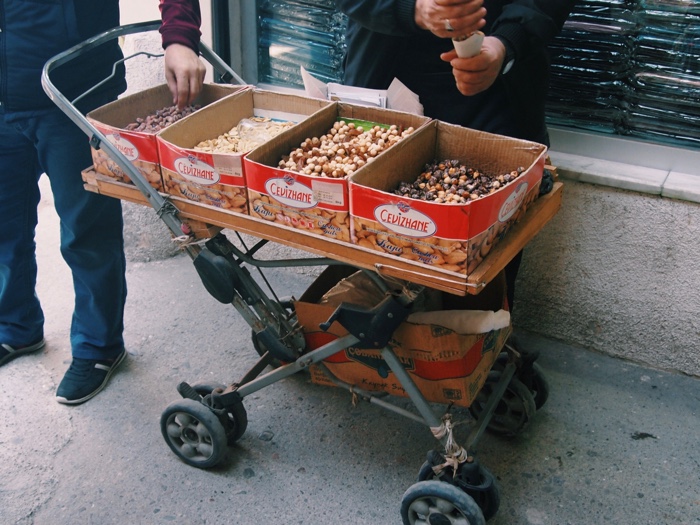
Nur Horsanali, Halletmek. Image courtesy of the artist
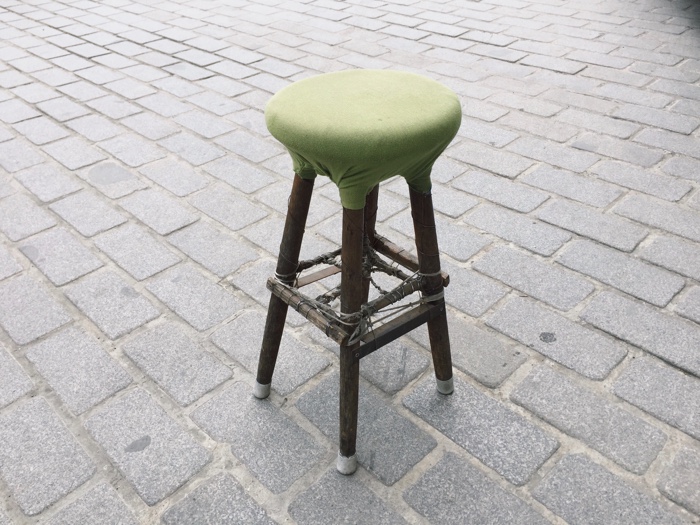
Nur Horsanali, Halletmek. Image courtesy of the artist
Nur Horsanalı, a designer interested in ethnographic research, vernacular design and craft, wanted to pay homage to practices that are so ubiquitous in Istanbul that people don’t even notice how shrewd they are.
What fascinated the designer is the way that these halletmek practices offer a shortcut to the methods and strategies adopted by designers: the researches, surveys, analysis, mind maps, sketches and models that make design dependable but somewhat slow and complex.
By offering a non-institutional alternative to traditional design approaches Halletmek asks us: “Could practical makeshift solutions in everyday life, be a guide for designers?”
Having received a ‘traditional’ design education, Horsanalı started her project by doing a field research in the different neighborhoods of Istanbul, documenting “halletmek” -both methods and objects- with photographs, drawings and interviews.
The outcome of her investigation is a wonderful little book that records 70 of the halletmek examples encountered in the public space. The publication maps the objects and processes and reveals how ideas for repair or upgrade spread from one neighbourhood to another, circumvent municipal rules and prohibitions or simply keep street cats and dogs happy.
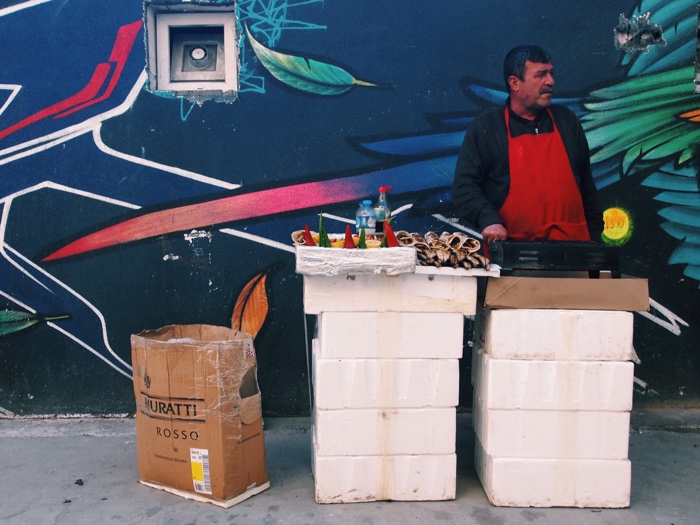
Nur Horsanali, Halletmek. Image courtesy of the artist
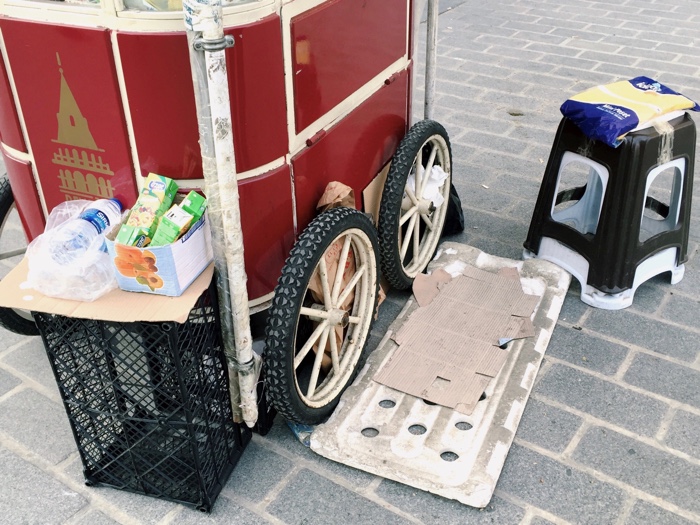
Nur Horsanali, Halletmek. Image courtesy of the artist
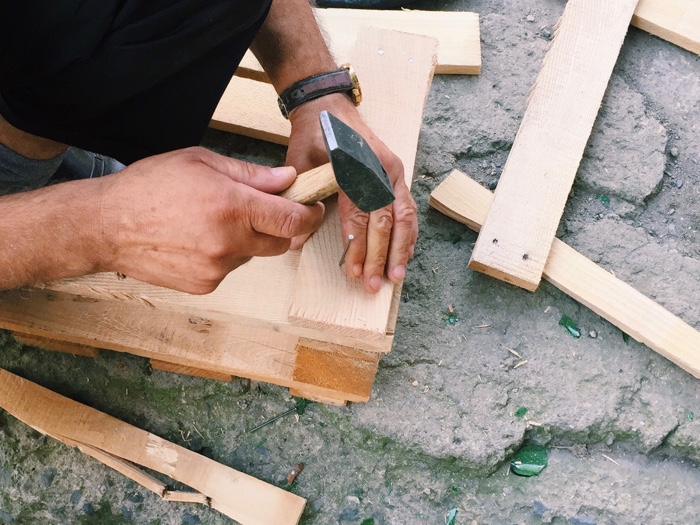
Nur Horsanali, Halletmek. Image courtesy of the artist
I discovered Nur Horsanali’s work while visiting A School of Schools, the 4th edition of the Istanbul Design Biennial. Here’s an interview with the designer:
Hi Nur! How did people react when you approach them to take photos of their Halletmek creations and started taking photos and asking questions? Did they suggest that your interest might be a little strange?
Most of them are suspicious of me at first. They do find it strange because for them it’s such a normal practice. After I explain myself and why I find their objects interesting, they are mostly happy and talkative. Sometimes I even feel that they are proud that I noticed their production.
I have some little tricks too. For example, if I am going to talk to a maker of a stool, I introduce myself as a furniture designer, to make it more relatable. Since this was my graduation project, saying that I am a student was also incredibly helpful. Turkish tradesmen have a weak spot for students.
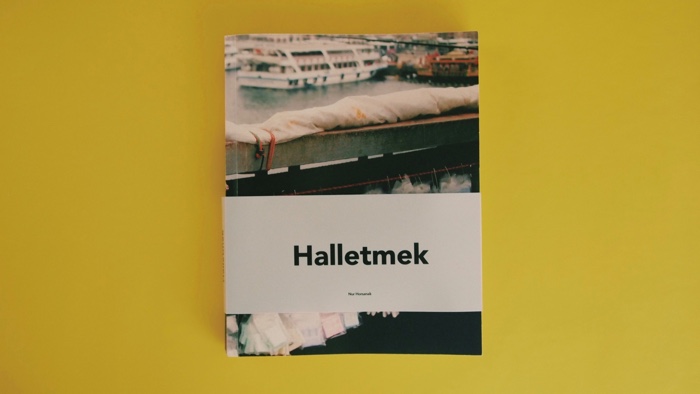
Nur Horsanali, Halletmek’s booklet (the digital version is available online.) Image courtesy of the artist
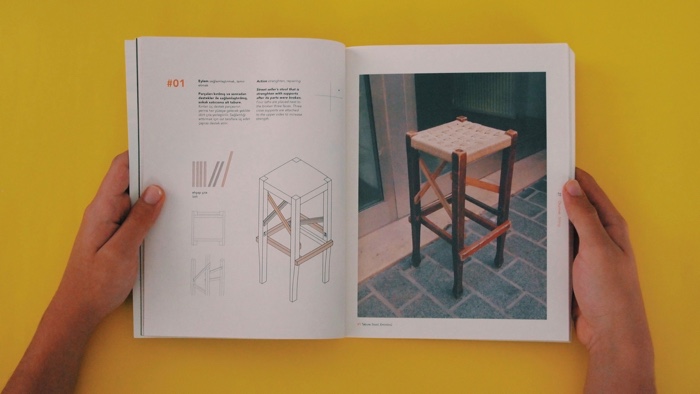
Nur Horsanali, Halletmek’s booklet (the digital version is available online.) Image courtesy of the artist
In your intro of the Halletmek book you explain that these practices are so widespread in Istanbul that no one notices them anymore. So what made you pay attention to them? How difficult was it to train your eyes to spotting them?
It started with one street food vendor. This vendor caught my attention because it inheld so much simple problem solving in one small area.
After that, it was not at all difficult to spot these in the street. My perception somehow opened for these practices immediately. In fact, now it is impossible for me to close this feature. Wherever place I visit, I see and find these objects around me. Now it happens pretty much automatically. I guess my eyes first spots the common materials such as tape or cardboard before the objects. Then my brain makes a fast analysis of what I see and decides whether if I should investigate closely or not.
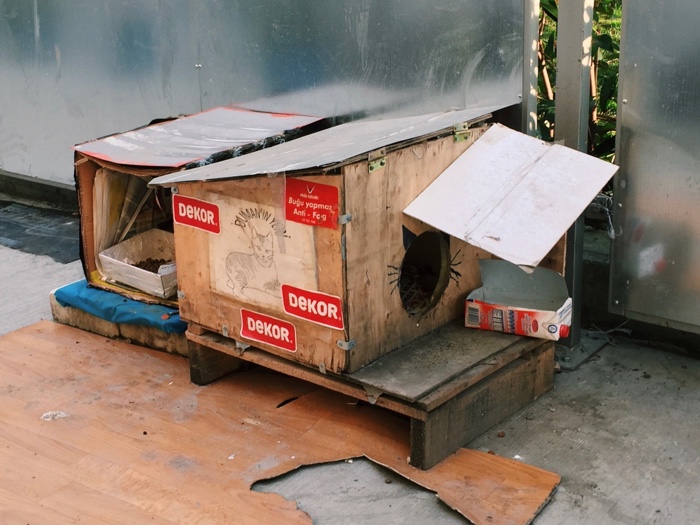
Nur Horsanali, Halletmek. Image courtesy of the artist
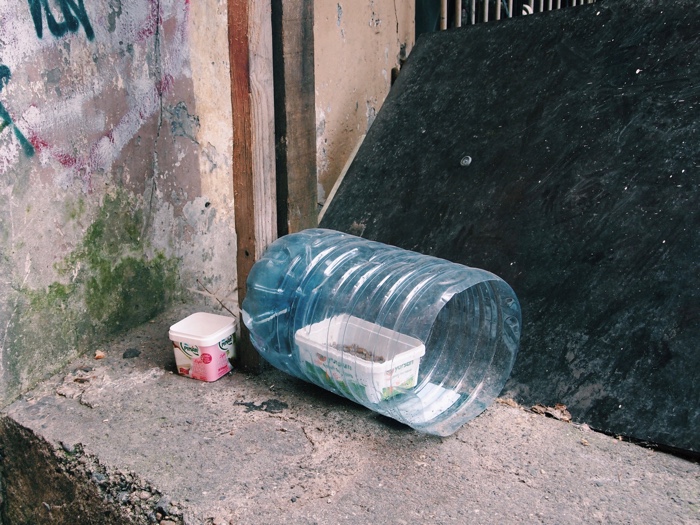
Nur Horsanali, Halletmek. Image courtesy of the artist
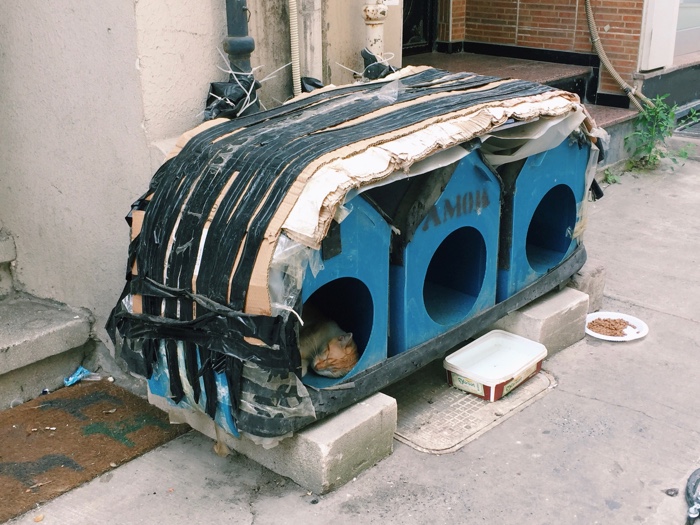
Nur Horsanali, Halletmek. Image courtesy of the artist
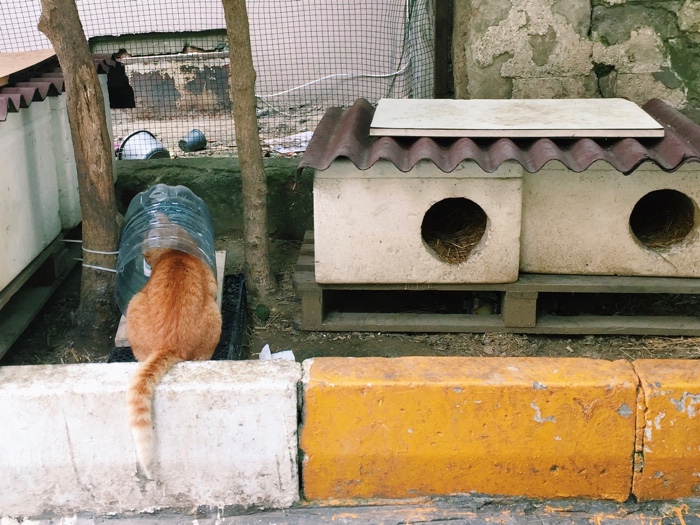
Nur Horsanali, Halletmek. Image courtesy of the artist
A chapter of the book is dedicated to cat culture in Istanbul. I had never been to Istanbul before the design biennial and was surprised to see all those cats that roam freely in the city and that are fed by the whole population. Could you tell us about some of the halletmek practices that address specifically the feline inhabitants of the city?
Houses and food containers made for stray animals on the streets of Istanbul are very diverse. Some are produced in very simple ways, mostly reusing discarded materials such as pet bottles or cardboard boxes. To this people, even the simplest material can serve as a temporal animal house when modified slightly. Some of the houses are built using more durable materials to be more permanent. In these cases people focus on customization and decoration as well. Sometimes the old furniture thrown into the street are upcycled into cat houses.
While various municipalities and firms also offer a variety of animal house solutions, people are still intervening in these ready-made houses because these “designed” products cannot fully meet the needs or tastes of real-life users. People tend to customise or upgrade these, for example, by adding blankets or newspapers inside to keep the animals warm or covering the houses with waterproof materials.
These practices are mostly for cats and dogs in the city, but I occasionally see things made for birds as well.
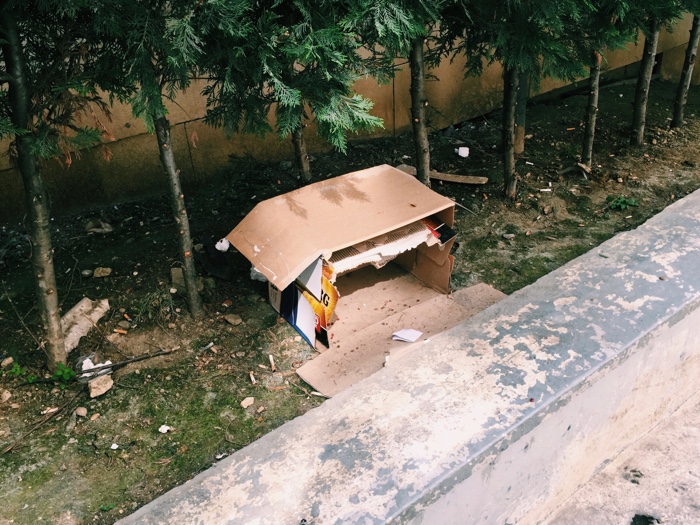
Nur Horsanali, Halletmek. Image courtesy of the artist
What are the most inspiring or surprising ideas and comments that emerged from your interviews with the authors of halletmek?
The most surprising and inspiring thing for me is a stool of a shoeshiner that has being fixed for 40 years now. This stool was given to him in the past by someone else. When a problem occurred with the stool, he kept on fixing it instead of buying a new one. This shows me a very anti-consumerist approach that I value.
A comment of one maker also had an influence on me. While we were producing a palette stool together for the biennial, he said that “Everybody could produce anything with unlimited materials and tools, the important thing is being able to do it with limited means.” This comment showed me that he truly understands why I do this project and why am I interested in his stool.
Could you give us a couple of examples of the halletmek practices that are meant to ‘overcome the municipally rules and prohibitions’? And do you know how much tolerance authorities might have towards them?
The most common example for this is the illegal street vendors at Istanbul. One of the most interesting scene I ever encounter in Istanbul is when police comes and all the illegal vendors start to run while carrying their stands. That is when I fully realize why do they produce their stands as in the shape and qualities they are now. To be honest, I don’t know how much tolerance the authorities actually have on this.
Fish sandwich stand built out of styrofoam is my favorite example. Sellers are looking for the cheapest and the most practical stand building methods because the municipality constantly take away their stands and they have to build their stands from scratch each time. The interesting part is that, when the most effective method to make that stand is found, information spreads and all different sellers in the same location begin to built their stands with the same method.
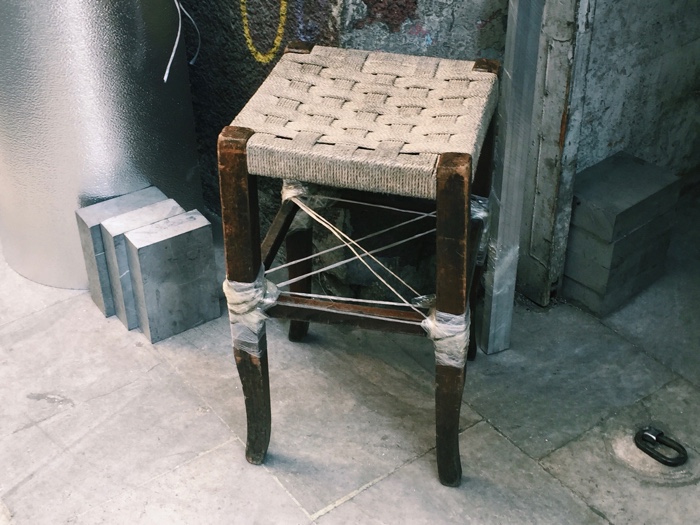
Nur Horsanali, Halletmek. Image courtesy of the artist
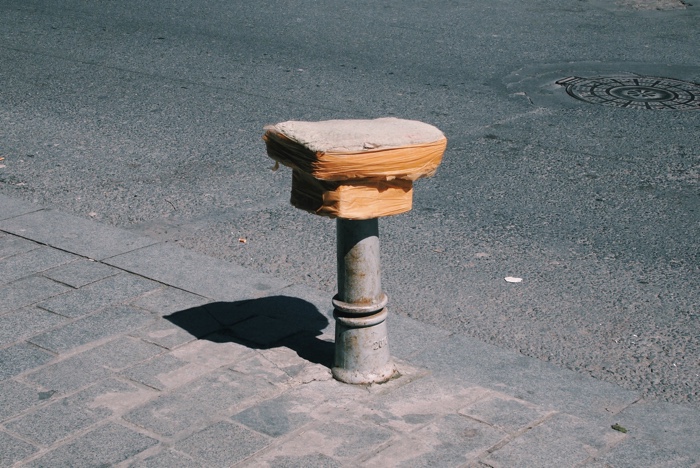
Nur Horsanali, Halletmek. Image courtesy of the artist
I suspect that halletmek might disappear before we know it. After all, buying a new chair, a vase or a little cat house is getting cheaper and cheaper. Do you see resistance to this idea of buying something new and cheap versus being more resourceful and crafty and doing your own bricolage operation?
Yes, it might disappear. In our domestic daily lives it has been disappearing for a long time now. In the streets, I do see a resistance though. In the street, there is an approach to use the waste materials and means at hand, instead of buying new. It’s being told that this approach connects to the nomadic past of Turkish people.
Even if people on the street are buying a new and cheap product, they are hacking them with their crafty operations to keep that cheap product longer than it’s usual life cycle. People do not find what’s ‘designed’ enough, so they update it in order to make it more useful or more aesthetically pleasing for themselves. So, I think ‘halletmek’ will keep it’s presence in some way.
What can designers learn from the “Halletmek” practice?
I am still constantly thinking on this. I aimed to open a discussion on what design is and how we can learn from our environment, rather than giving a certain answer on how ‘halletmek’ should be implemented into design. I think understanding these practical productions which don’t rely on big budgets or high technologies, and the approach of making something out of nothing is valuable in order to think of a more anti-consumerist and sustainable way of designing.
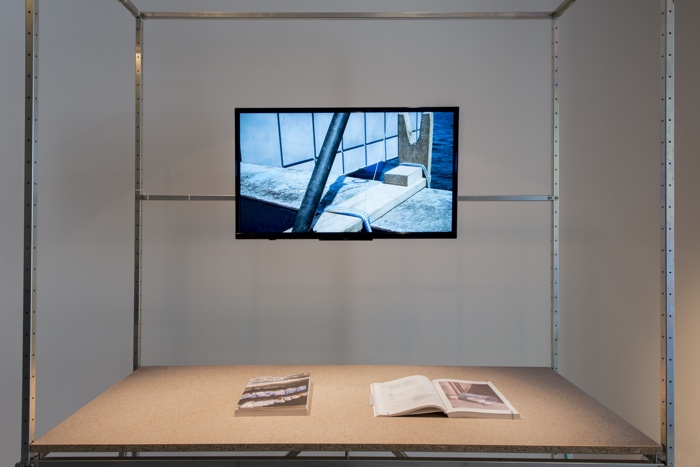
Nur Horsanali, Halletmek, exhibition view as part of the “Unmaking School” show at Akbank Sanat. Photo by Kayhan Kaygusuz, courtesy of IKSV
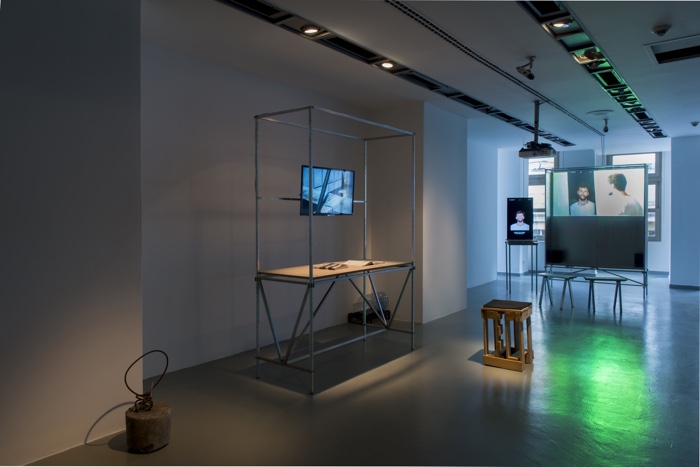
Nur Horsanali, Halletmek, exhibition view as part of the “Unmaking School” show at Akbank Sanat. Photo by Kayhan Kaygusuz, courtesy of IKSV
What’s next for you? Any upcoming projects, events, fields of research you’d like to share with us?
I’m currently doing my master’s in Helsinki. There I continue to think on ways of making and designing. I got interested in the behaviour of “improvisation” -which also relates to ‘halletmek’ in a way- and I would like to research it’s relationship to design further. I still like to continue on the ‘Halletmek’ research as well. Continuing collecting examples from different countries and creating an online collective archive of these objects would be great.
Thanks Nur!
A School of School, the 4th Istanbul Design Biennial is curated by Jan Boelen and organised by the Istanbul Foundation for Culture and Arts (IKSV). The exhibitions remain open at various locations in Istanbul until 4 November 2018.
Related stories: Gambiologia, the Brazilian art and science of kludging and Gambiologia magazine: “The gambiarra movement”.


